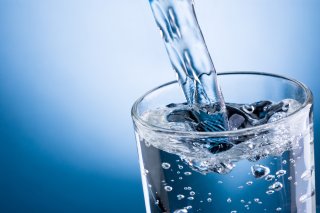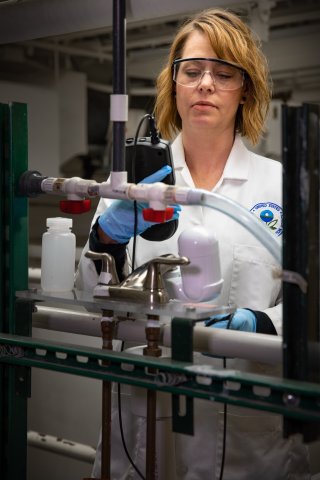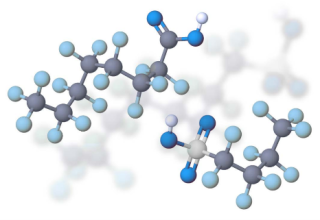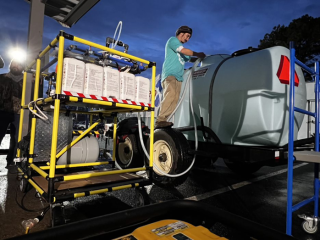Treatment and Control of Drinking Water Contaminants Research
Treating drinking water prior to distribution is critical for the protection of public health. EPA research is advancing innovative and sustainable technologies and processes for addressing immediate and emerging chemical and biological contaminants of concern, such as per- and polyfluoroalkyl substances (PFAS), lead, algal toxins, disinfection byproducts, and opportunistic pathogens. This research is also advancing the development and evaluation of effective and low-cost treatment technologies for small systems and overburdened communities.
- Chemical Contaminants
- Microbial Contaminants (Pathogens)
- Contaminants of Emerging Concern
- Advancing Treatment Technologies and Providing Small and Vulnerable Communities Access to Information
- Treatment During an Emergency
Chemical Contaminants
Chemical contaminants (inorganic and organic) in drinking water are elements or compounds that may be naturally occurring, such as metals and algal toxins, or human made, such as PFAS and pharmaceuticals. EPA’s drinking water research is addressing a wide range of chemical contaminants of emerging concern.
Lead and Copper
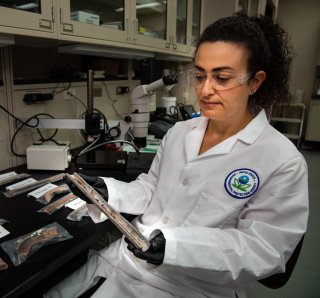
Lead and copper enter drinking water primarily through plumbing materials that contain them, especially where the water has high acidity or low mineral content that corrodes pipes and fixtures. The most common sources of lead in drinking water are lead pipes, faucets, and fixtures. In homes with lead pipes that connect the home to the water main, also known as lead services lines, these pipes are typically the most significant source of lead in the water. Lead pipes are more likely to be found in older cities and homes built before 1986. Among homes without lead service lines, the most common problem is with leaded brass components in chrome-plated faucets and plumbing with lead solder.
EPA’s lead and copper research focuses on source identification and relative source contributions, lead service line identification, sampling approaches, and will improve models for estimating lead exposure and mobility. Researchers are addressing corrosion control issues in distribution systems, including premise plumbing, and the physical and chemical attributes of distribution system water that may lead to the release of lead and copper.
Research Efforts
- Developing and evaluating corrosion control strategies for minimizing pitting and release of contaminants in water-delivery systems.
- Developing improved lead and copper sampling and detection strategies, including those for lead service line identification (LSLID).
- Developing sampling methodologies and modeling approaches to inform strategies to eliminate lead exposure from drinking water.
- Developing and evaluating strategies, such as point-of-use (POU) water filters, to effectively reduce lead in drinking water.
- Characterizing lead and copper in distribution systems and premise plumbing to assess lead release mechanisms and corrosion control effectiveness.
Visit our EPA Lead (Pb) Research: Water webpage for additional research highlights.
Per- and Polyfluoroalkyl Substances (PFAS)
Per- and polyfluoroalkyl substances (PFAS PFAS, Per- and polyfluoroalkyl substances (PFAS) are a group of synthetic chemicals that have been in use since the 1940s. PFAS are found in a wide array of consumer and industrial products. PFAS manufacturing and processing facilities, facilities using PFAS in production of other products, airports, and military installations are some of the potential contributors of PFAS releases into the air, soil, and water. Due to their widespread use and persistence in the environment, most people in the United States have been exposed to PFAS. There is evidence that continued exposure above specific levels to certain PFAS may lead to adverse health effects.) contamination of water is a significant issue in the United States and a high priority for the Agency. PFAS are a complex class of chemicals, some of which are persistent in the environment and human body. EPA’s research in the Office of Research and Development includes scientific support of regulatory and rulemaking efforts regarding PFAS in drinking water.
Research Efforts
- Developing and optimizing methods for sampling and analyzing PFAS in drinking water samples.
- Developing approaches for identifying and characterizing PFAS sources and occurrence to facilitate pretreatment and treatment technologies for integration into management approaches.
- Evaluating, modeling, and optimizing treatment technologies and process for removing PFAS from community water systems, with an emphasis on small systems.
- Evaluating approaches for disposal and destruction of PFAS residuals from spent drinking water treatment media and sludge.
Algal Toxins
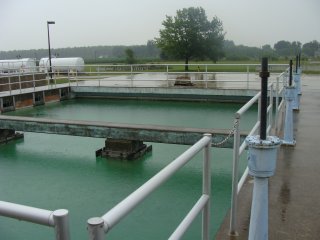
Algal toxins from harmful algal blooms A rapid increase or accumulation in the population of algae (typically microscopic) in a water system. Algal blooms may occur in freshwater as well as marine environments. (HABs)are a growing risk for source water contamination, as well as the drinking water treatment facilities that the source waters supply. These treatment facilities face a difficult task of not only removing the toxins, but doing so in a safe and cost-effective way. EPA's researchers are helping communities by providing the science needed to confront this challenge.
Research Efforts
- Developing a rigorous framework for identifying water sources and drinking water systems vulnerable to HABs.
- Evaluating the efficacy and impacts of interventions applied to remove cyanobacteria Cyanobacteria are a group of cyan colored bacteria often referred to as blue-green algae. Cyanobacteria, are frequently found in freshwater systems. They can also be found in estuarine and marine waters in the U.S. Cyanobacteria are often confused with green algae, because both can produce dense mats that can impede activities like swimming and fishing, and may cause odor problems and oxygen depletion; however, unlike cyanobacteria, green algae are not generally thought to produce toxins. Some freshwater cyanobacterial blooms or cyanoHABs are able to produce highly potent toxins, known as cyanotoxins. biomass and metabolites from drinking water. Efforts include the evaluation of treatment processes to remove commonly recognized cyanotoxins (microcystin, cylindrospermopsin, anatoxin, nodularin, and saxitoxin) and other less common metabolites.
- Improving the performance of existing operations by modifying the locations where treatment chemicals for cyanotoxin removal are applied and what types and concentrations used.
- Evaluating how algicide exposure affects cyanobacterial responses to drinking water treatment.
Nitrate
EPA is investigating innovative methods for nitrate reduction, including bench-scale experiments on the reduction of nitrate by sulfur, a process that can reduce the need for chemical handling among small drinking water systems. Researchers are also investigating an anaerobic biological denitrification pilot system. Initial research demonstrates that these innovative methods achieve good nitrate removal and have important operational benefits as compared to existing drinking water denitrification systems, such as less frequent backwashing and reduced chemical costs, and show promise for small community applications.
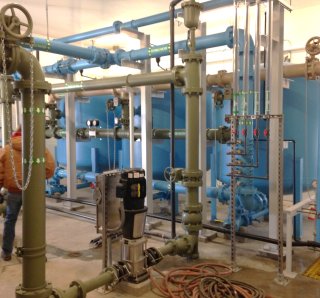
Manganese, Arsenic, Ammonia, and Iron
EPA researchers are investigating biological treatment of drinking water for manganese, ammonia, arsenic, and iron. Researchers are conducting a pilot-scale biological treatment study for manganese removal, a pilot-scale biological treatment study for ammonia removal, and studying the biological treatment of arsenic. One of the major potential advantages of biological treatment processes is the minimal need for chemical handling and processes oversight. These advantages in turn make the process potentially advantageous for use in small drinking water treatment systems.
EPA researchers are also investigating arsenic accumulation and its release from old cast iron water mains into water distribution systems, leading to arsenic levels above allowable limits and threats to consumer health. Research includes surveys of arsenic drinking water throughout the United States and testing the addition of orthophosphate to drinking water as a method to reduce arsenic release.
Disinfection Byproducts
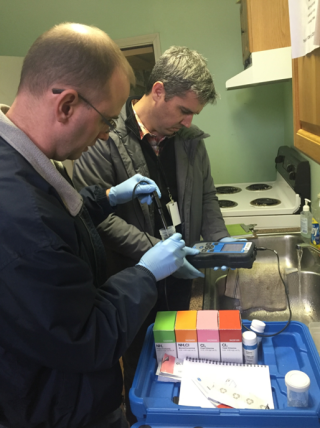
Balancing residual disinfectant levels in distribution systems remains a challenge to control pathogens without forming unacceptable levels of harmful byproducts from the disinfectants. EPA researchers are studying effective control of disinfection byproducts Organic and inorganic compounds that often result from the reaction between a disinfectant and naturally occurring materials in water; chloroform is a commonly found example. (DBPs) in distribution and premise plumbing systems, while still effectively reducing opportunistic pathogens, such as Legionella. Through the use of bench-scale and computer-simulated approaches, EPA scientists and engineers are evaluating effective disinfectant concentrations to treat these pathogens while minimizing DBPs.
Additionally, researchers are studying the relationships between health risks associated with DBPs, disinfectant Any oxidant, including but not limited to chlorine, chlorine dioxide, chloramines, and ozone, that is added to water in any part of the treatment or distribution process and is intended to kill or inactivate pathogenic microorganisms. residuals, pathogen occurrence, and corrosion control of distribution systems and premise plumbing.
Also see microbial contaminants (pathogens) research on this page.
Research Efforts:
- Applying bioassays to evaluate the toxicity of DBP mixtures.
- Developing models to help utilities generate effective concentrations of chloramine disinfectant.
- Evaluating how the concentration and removal of treatment precursors, such as natural organic matter and ammonia, via different treatment processes affect DBP concentrations and opportunistic pathogens in treated drinking water.
- Developing web-based applications that serve as learning tools for drinking water operators, engineers, researchers, and students by providing an interactive environment to explore and understand these water chemistry scenarios.
- Free Chlorine Estimator for Dichlor and Trichlor Systems. This tool can be used to estimate the free chlorine concentration when cyanuric acid is present as is the case when adding chlorine-containing chemicals, commonly referred to as Dichlor or Trichlor, to water.
- Chlorine Breakpoint Curve Simulator. This tool can be used to explore chlorine breakpoint chemistry, including relevant practical scenarios. Users can simulate and generate chlorine breakpoint curves under various user-provided conditions, including reaction times.
- Chloramine Formation and Decay Simulator. This tool can be used to explore inorganic chloramine chemistry, including relevant practical scenarios. Users can simulate three scenarios for chloramines in drinking water: simultaneous addition, preformed chloramines, and booster chlorination.
Microbial Contaminants (Pathogens)
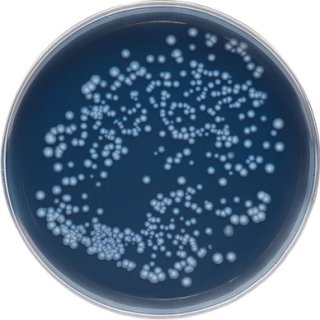
In drinking water, microbial contaminants (also referred to as biological contaminants) are microorganisms that act as pathogens Disease-causing organisms, such as some bacteria, viruses, or protozoa.. Opportunistic pathogens, like Legionella, continue to be one of the leading causes of drinking water related disease outbreaks. Other pathogens, including a wide variety of bacteria, protozoans, and viruses, also pose significant human health risks.
Current treatments of pathogens include the use of disinfectants, such as chlorine and monochloramine, ultraviolet treatment, and filtration. To control and minimize the presence of these organisms, sufficient disinfectant residuals need to be maintained in the drinking water distribution system. In addition, systems need to balance the management of pathogens while minimizing the risk posed by the formation of disinfection byproducts (DBPs).
Small- to medium-sized drinking water systems may have limited resources and expertise to evaluate and install innovative technologies. EPA research aims to help these utilities optimize disinfection practices and manage water quality throughout the drinking water system to reduce opportunistic and other pathogens.
Research Efforts
- Developing, validating, and applying methods for detecting the occurrence and improving the understanding of human/ecological health impacts of opportunistic and zoonotic pathogens, such as Legionella, Mycobacteria, and Pseudomonas, as well as other organisms, including viruses and protozoans.
- Developing, evaluating, and applying equitable treatment technologies for mitigating microbial contamination throughout drinking water systems, including premise plumbing.
- Identifying and evaluating water management plans, with emphasis on effective removal and mitigation of pathogens in distribution systems, such as storage tanks and premise plumbing.
- Understanding the occurrence, prevalence, and control of Legionella throughout the drinking water system and improving treatment technologies and management practices to control this organism.
- Using bench-scale and computer-simulated approaches in determining effective disinfectant concentrations to treat pathogens in distribution systems and premise plumbing while minimizing DBP formation.
- Examining the relationships between health risks associated with DBPs, disinfectant residuals, pathogen occurrences and corrosion control of public distribution systems and premise plumbing.
- Evaluating how concentrations and removal of treatment precursors, such as natural organic matter and ammonia, via different treatment processes affect disinfection byproduct concentrations and opportunistic pathogens in treated drinking water.
Contaminants of Emerging Concern (CECs)

Contaminants of emerging concern (CECs) are chemicals that have not previously been detected in water or are being detected at significantly different levels than expected. These include a wide array of potential pollutants, such as pharmaceuticals, personal care products, per-and polyfluoroalkyl substances (PFAS), surfactants, microorganisms, microplastics, and endocrine disrupting chemicals, among others. Factors such as shrinking water and financial resources, climate change, agricultural runoff, harmful algal blooms (HABs), and industrial land use can increase the probability of CECs found in drinking water. This issue is likely to disproportionately affect small drinking water systems due to limited resources and treatment options, among other factors.
These unregulated contaminants can also occur in wastewater, reused water, or other sources and a comprehensive understanding of the risk posed by these potential pollutants is needed. CECs can be difficult to measure and can be linked to many current or historic sources. EPA’s research investigates analytical methods, occurrence, health effects, and treatment assessments to aid decision making to ensure that these CECs are at safe levels in drinking water, wastewater, and reused water.
Research Efforts
- Developing methods and models to estimate and predict contaminant prevalence and occurrence, toxicity, and risk in drinking water.
- Developing integrated models of multi-route and multi-contaminant exposures to improve assessment methods for detection and quantification of priority CECs in drinking water.
- Filling key knowledge gaps to support and enhance decision making for chemical and microbial contaminants in drinking water, including the assessment of dermal impacts of chemical contaminants, measurement methods for priority CEC contaminants, and evaluation of point-of-use (POU) filters for contaminant sampling.
- Developing innovative approaches for evaluating exposure to and toxicity from chemical mixtures in drinking water, including the use of gene-expression biomarkers to distinguish different mixtures and in vivo toxicity of DBP mixtures to predict proportional response.
Advancing Treatment Technologies and Providing Small and Vulnerable Communities Access to Information
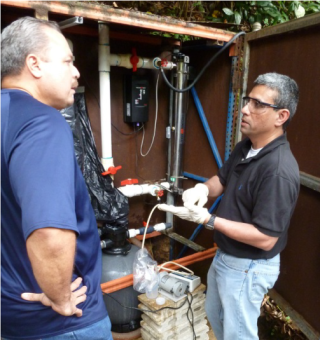
There are over 145,000 active public drinking water systems in the United States. Of these, 95% are considered small systems under the Safe Drinking Water Act, meaning they serve 10,000 or fewer people. While many of these active small systems consistently provide safe, reliable drinking water to their customers, many face a number of challenges in their ability to achieve and maintain system sustainability. Some of these small system challenges include lack of expertise to choose, operate, and maintain systems; lack of financial resources; aging infrastructure and limited options for residual disposal.
EPA researchers are developing tools, technologies, and approaches to help small systems lower costs and provide safe drinking water now and in the future.
Research Efforts
- Developing and evaluating effective and low-cost treatment technologies for small and vulnerable systems and overburdened communities.
- Evaluating advanced, innovative, and sustainable treatment technologies.
- Evaluating how concentrations and removal of precursors, such as natural organic matter and ammonia, via different treatment processes affect disinfection byproduct concentrations and opportunistic pathogens in treated drinking water.
- Updating EPA’s Drinking Water Treatability Database with additional contaminant information.
- Developing a web platform for accessing water treatment models.
Treatment During an Emergency
There is the possibility that some drinking water systems may be affected by natural disasters, security incidents, or high levels of contaminants in the source where the drinking water comes from. On-site water treatment systems for contaminant incident responses need to be compatible with potentially enormous volumes of contaminated water. Evaluation of mobile, on-site emergency water treatment systems involves consideration of transportation issues, deployment, operation, cost and effectiveness for treating a wide variety of contaminants and concentrations.
EPA is researching decision support tools to help decision makers balance the many factors that go into the design and implementation of a treatment system at their site. Part of this process could be containing the contaminated water locally so that it can be treated without the potential of releasing the contaminated water to the environment. Because these potential water volumes involved can be technically challenging, EPA is researching innovative approaches that would use locally available equipment and assets.

